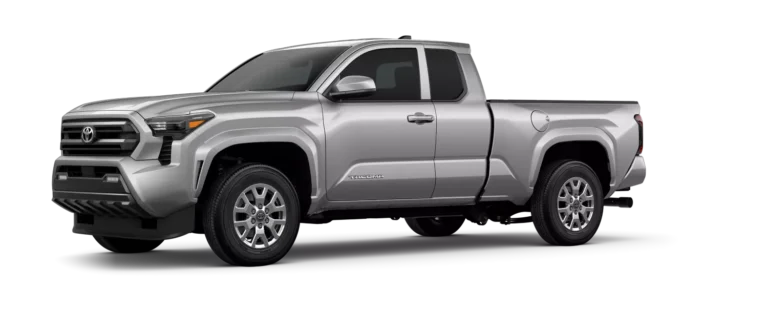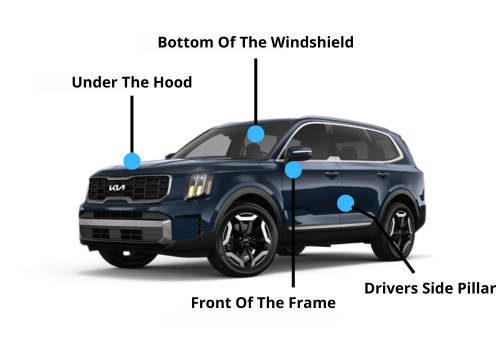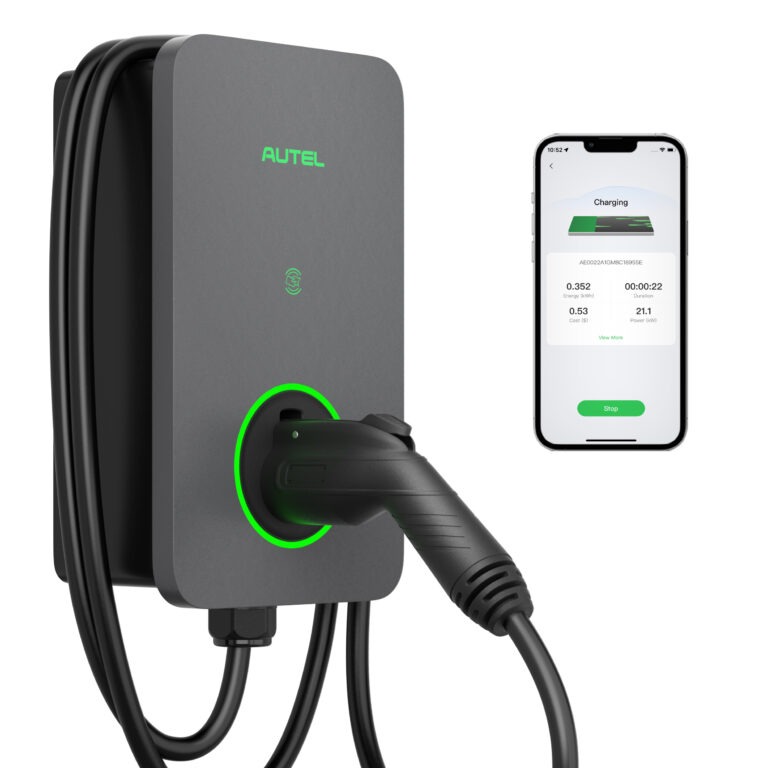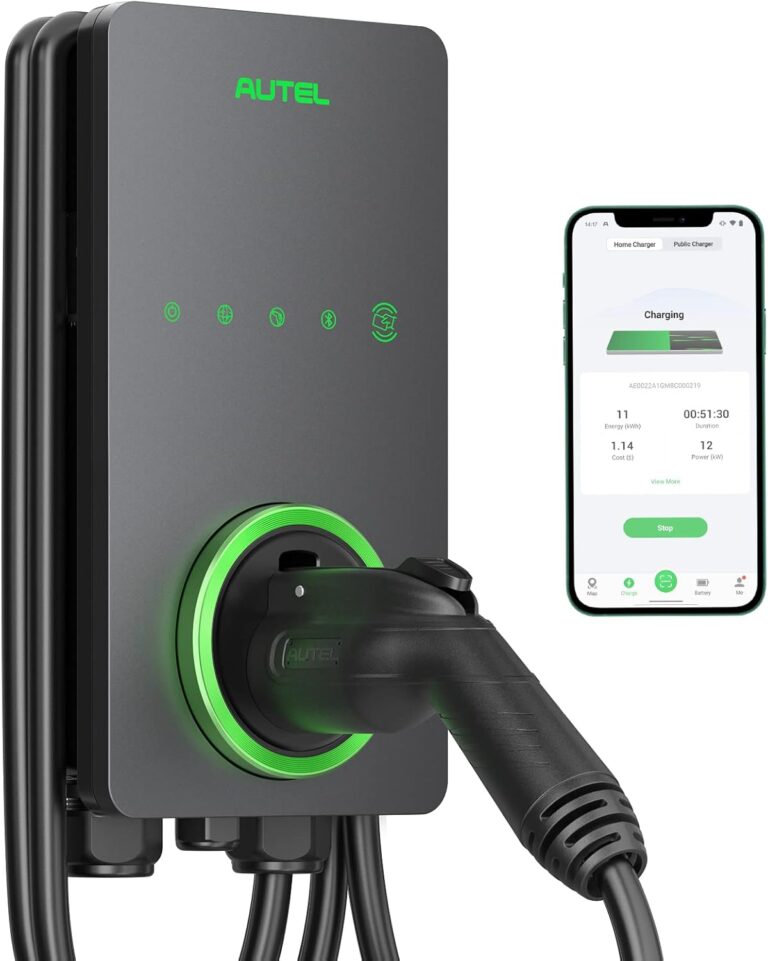
Kia VIN Decoder
Don’t risk hidden issues! Click ‘Check Any VIN Now’ to see recalls, problems, Issues and more! Just enter your VIN and email to get your report.
Free Kia VIN Decoder
What Is A Kia VIN Decoder
Kia has come a long way from its humble beginnings, evolving into a brand known for stylish design, advanced technology, and unbeatable value. Whether you’re behind the wheel of a sleek Kia EV6, a spacious Telluride, or a city-friendly Sportage, knowing the finer details of your vehicle can make all the difference—whether you’re buying, selling, or maintaining it.
That’s where your Kia’s Vehicle Identification Number (VIN) comes in. More than just a string of numbers and letters, the VIN is like a DNA sequence for your car, holding key details about its engine type, trim level, drivetrain, and even where it was built. This is invaluable for buyers verifying a vehicle’s features, owners ordering the right replacement parts, or anyone curious about their Kia’s exact specs.
We’ll take you deep into the world of Kia VIN decoding, covering everything you need to know:
What is a Kia VIN Decoder? – Learn how this 17-character code serves as a vehicle’s unique ID, holding information about where it was built, its engine type, trim level, and more.
- Decoding Your Kia VIN – We’ll break down each section of the VIN, revealing details like body style, drivetrain (AWD, FWD, etc.), and factory-installed options specific to Kia models.
- Free vs. Paid Kia VIN Decoders – Not all VIN decoders are the same. We’ll compare free and paid tools, highlighting which ones provide the most accurate and detailed information about your Kia.
- Kia VIN Structure – Understand the organization of the VIN, including the World Manufacturer Identifier (WMI) that indicates where your Kia was produced, whether in South Korea, the U.S., or another global factory.
- Where to Find Your Kia VIN – From the dashboard to the driver’s side door frame, we’ll show you exactly where to locate your Kia’s VIN across different models and years.
- Decoding Specific Kia Codes – Every Kia VIN contains unique codes that reveal critical details, such as the engine type (Smartstream, Turbo GDI, or hybrid variants), transmission, and special edition trims like the GT-Line or X-Pro.
- Kia-Specific Information – Beyond the standard VIN breakdown, we’ll explore resources for accessing Kia build sheets, which can provide even more detailed information about your vehicle’s original configuration, including factory-installed options and colors.
- Checking for Kia Recalls – Your VIN is also a powerful tool for checking recall history. We’ll guide you through using it to verify whether your Kia has any outstanding recalls, ensuring safety and peace of mind.
- Kia Owner Communities – Connect with Kia enthusiasts and experts through online forums and communities where members often help decode VINs and provide insights on specific models.
Table of Contents
Kia VIN Locations

Where To Find The VIN On A Kia Forte / Cerato
(2003–Present)
- Dashboard: Easily visible through the driver’s side windshield, near the base.
- Driver’s Side Door Frame: Found on the B-pillar sticker when the door is open.
- Engine Bay: Typically stamped on the firewall or near the shock tower.
- Paperwork: Present on the registration, title, insurance policy, and owner’s manual.
Where To Find The VIN On A Kia Rio (1999–Present)
- Dashboard: Located on the driver’s side dashboard, visible from outside.
- Driver’s Side Door Frame: Printed on a VIN plate inside the door jamb.
- Engine Bay: Often stamped near the radiator support or firewall.
- Paperwork: Found in the title documents, insurance card, and service booklet.
Where To Find The VIN On A Kia Optima / K5
(2000–Present)
- Dashboard: Situated at the lower-left windshield corner, viewable from outside.
- Driver’s Side Door Frame: On the factory label inside the door jamb.
- Engine Bay: Usually found on the firewall or near the engine strut mount.
- Paperwork: Included in ownership documents, registration, and insurance files.
Where To Find The VIN On A Kia Stinger
(2017–2023)
- Dashboard: Clearly visible at the base of the windshield on the driver’s side.
- Driver’s Side Door Frame: Attached to the door pillar label, accessible when the door is open.
- Engine Bay: Engraved on the firewall or front subframe.
- Paperwork: Listed on registration, loan agreements, and warranty records.
Where To Find The VIN On A Kia Soul (2008–Present)
- Dashboard: Placed on the lower-left dashboard, visible through the windshield.
- Driver’s Side Door Frame: Inside the door jamb, on a factory-applied sticker.
- Engine Bay: Typically stamped on the firewall or front crossmember.
- Paperwork: Found in vehicle registration, title certificate, and insurance details.
Where To Find The VIN On A Kia Seltos
(2019–Present)
- Dashboard: Easily spotted through the windshield on the driver’s side.
- Driver’s Side Door Frame: Inside the door jamb, affixed to the factory identification sticker.
- Engine Bay: Stamped on the chassis near the radiator support.
- Paperwork: Documented in registration records, insurance paperwork, and warranty booklets.
Where To Find The VIN On A Kia Sportage
(1993–Present)
- Dashboard: Positioned at the base of the windshield, on the driver’s side.
- Driver’s Side Door Frame: Found inside the door frame, on the compliance label.
- Engine Bay: Stamped onto the firewall, sometimes near the battery tray.
- Chassis Frame (Older Models): May be stamped on the front subframe rail.
- Paperwork: Listed in title documents, registration, and service history records.
Where To Find The VIN On A Kia Sorento
(2002–Present)
- Dashboard: Clearly visible at the lower-left corner of the windshield.
- Driver’s Side Door Frame: Inside the B-pillar, on a factory-installed label.
- Engine Bay: Often stamped on the firewall or front suspension mounting points.
- Paperwork: Located on the vehicle title, registration, and insurance documents.
Where To Find The VIN On A Kia Telluride
(2020–Present)
- Dashboard: Engraved at the base of the driver’s windshield, readable from outside.
- Driver’s Side Door Frame: Printed on the compliance sticker inside the door jamb.
- Engine Bay: Stamped on the firewall or front chassis support beam.
- Paperwork: Listed in ownership records, registration, and manufacturer warranty papers
Kia VIN Decoder - All Codes
Country of Origin
| Code | Country |
|---|---|
| K | South Korea |
| 1 | USA |
| 2 | Canada |
| 3 | Mexico |
Manufacturer
| Code | Manufacturer |
|---|---|
| K | Kia Motors Corporation |
Model Line and Years
| Model Code | Model Name | Production Years |
|---|---|---|
| DC | Rio | 2001–2005 |
| DE | Rio | 2006–2009 |
| FA | Sephia | 1994–1997 |
| FB | Sephia | 1998–2001 |
| FB | Spectra | 2000–Mid-2004 |
| FE | Spectra (New Design) | Mid-2004–2009 |
| FG | Rondo | 2007–2009 |
| GD | Optima/Magentis | 2001–Mid-2006 |
| GE | Optima/Magentis (New Design) | Mid-2006–2009 |
| LD | Amanti | 2004–2009 |
| JA | Sportage 4x4 | 1995–2002 |
| JB | Sportage 4x2 | 1995–2002 |
| JC | Sorento 4x4 | 2003–2009 |
| JD | Sorento 4x2 | 2003–2009 |
| JE | Sportage 4x4 | 2005–2009 |
Manufacturing Plant
| Code | Plant |
|---|---|
| S | Seosan Plant, South Korea |
| H | Hwaseong Plant, South Korea |
| G | Gwangju Plant, South Korea |
| Y | Yangon Plant, Myanmar |
How To Decode a Kia VIN
Characters 1-3: World Manufacturer Identifier (WMI) The first three characters identify the manufacturer. Common Kia WMIs include KNA (Kia Motors Corporation – South Korea), 5XX (Hyundai/Kia – North America), and XWE (Kia Motors Slovakia).
Characters 4-8: Vehicle Descriptor Section (VDS) Characters 4-8 provide details about the model, body style (Sedan, SUV, Hatchback), engine type (e.g., 2.0L, Turbocharged), and trim level (LX, EX, SX). This section varies greatly depending on the specific Kia model and year.
Character 9: Check Digit Character 9 is a check digit used to verify the VIN’s authenticity.
Character 10: Model Year Character 10 indicates the model year (e.g., ‘A’ for 2010, ‘B’ for 2011, etc.). See the table below for model year codes.
Character 11: Assembly Plant Character 11 identifies the assembly plant location.
Characters 12-17: Vehicle Serial Number (VSN) Characters 12-17 are a unique serial number assigned to each individual Kia.
Kia Model Year VIN Codes (Character 10):
| Year | VIN Code | Year | VIN Code |
| 2000 | Y | 2012 | C |
| 2001 | 1 | 2013 | D |
| 2002 | 2 | 2014 | E |
| 2003 | 3 | 2015 | F |
| 2004 | 4 | 2016 | G |
| 2005 | 5 | 2017 | H |
| 2006 | 6 | 2018 | J |
| 2007 | 7 | 2019 | K |
| 2008 | 8 | 2020 | L |
| 2009 | 9 | 2021 | M |
| 2010 | A | 2022 | N |
| 2011 | B | 2023 | P |
| – | – | 2024 | R |
How to Decode Your Kia VIN:
-
Locate Your Kia VIN: Find your Kia VIN on the driver’s side dashboard (visible through the windshield), on the driver’s side doorjamb sticker, or on your vehicle’s title and registration documents.
-
Use a Free Kia VIN Decoder: Several online VIN decoder tools can help you interpret your Kia VIN. Here are a few options:
-
Enter Your VIN: Carefully enter your Kia VIN into the decoder tool.
-
Review the Results: The decoder will provide you with a summary of your Kia’s specifications and origin.
When to Contact a Kia Dealership
- If you need help decoding your Kia VIN or understanding the results, don’t hesitate to contact a certified Kia dealership. They have access to the most accurate and up-to-date information.
Best Kia VIN Decoders
- carVertical is a popular VIN decoder that focuses on providing a comprehensive vehicle history report. They often emphasize uncovering hidden damage, mileage rollbacks, theft records, and maintenance history. Some users have found their reports quite detailed.
1. NHTSA VIN Decoder (vpic.nhtsa.dot.gov/decoder/)
Pros:
Official Source: This is the U.S. National Highway Traffic Safety Administration’s decoder, so it’s generally considered a reliable source for basic information.
Free: It’s a free service provided by the government.
Decent Basic Information: Provides information about the manufacturer, make, model, and some basic specifications.
Cons:
Limited Detail: It might not provide very detailed information about trim levels, options, or specific engine codes within the VIN.
Focus on US Vehicles: Best for decoding VINs of vehicles sold and registered in the United States.
2. Kia Dealership (Contacting a Service or Parts Department)
Pros:
Most Accurate: Kia dealerships have access to the most accurate and up-to-date VIN decoding information for Kia vehicles.
Model-Specific Details: They can often provide details that aren’t available on public VIN decoders.
Expert Assistance: You can talk to a knowledgeable person who can help you understand the results.
Cons:
May Require a Visit or Phone Call: You’ll need to contact a dealership directly, which takes more time than using an online tool.
They may not release all the information Dealerships may not release information about other Kia vehicles that you do not own.
Where Do i Find The VIN Number On My Kia
Driver’s Side Dashboard (Through Windshield):
This is usually the easiest place to find the VIN.
Stand outside the vehicle, on the driver’s side.
Look at the lower corner of the dashboard where it meets the windshield. There should be a small metal or plastic plate with the 17-character VIN visible through the glass.
Driver’s Side Doorjamb:
Open the driver’s side door.
Look on the doorjamb (the part of the car’s frame that the door latches onto).
You should find a sticker containing the VIN along with other vehicle information like tire pressure specifications and manufacturing date. The VIN may be labeled as “VIN” or “Vehicle Identification Number.”
Secondary Locations (If you can’t find it in the primary locations):
Vehicle Title:
Your vehicle title (the legal document proving ownership) will always have the VIN printed on it.
Vehicle Registration:
Your vehicle registration documents (issued by your state’s DMV) will also include the VIN.
Insurance Card or Policy:
Your insurance card or policy documents should also list the VIN of your Kia.
How Do I Find the VIN in the Kia app (Bluelink)
Open the Kia Access/Kia Connect App: Launch the app on your smartphone or tablet.
Log In: Make sure you’re logged in to your Kia account. This should be the same account you used to set up the app with your vehicle.
Navigate to Vehicle Information (or Similar): The location of the VIN within the app might vary slightly depending on the app version, but look for sections like:
“My Vehicle”
“Vehicle Details”
“Account” (sometimes vehicle information is under account settings)
“Garage” (if you have multiple vehicles linked to the app)
Look for “VIN” or “Vehicle Identification Number”: Once you’re in the vehicle information section, you should see the VIN listed alongside other details about your car. It might be clearly labeled as “VIN” or “Vehicle Identification Number.”
Discover the value of your cars options and specification!
- Select from thousands of vehicles and options
- See how each option adds value to your car
- Discover which tech features add a premium
- Spot which options hold their value over time
- Find out if that 'Sport' package pays off later
- Identify high value features others miss
$355 $354 $353 $352 $351 $350
Kia Forums and Communities
- Kia Forums at Edmunds.com:
- Link: https://forums.edmunds.com/discussion/277/kia/general/kia-discussions
- Description: Edmunds is a well-known automotive resource, and their Kia forums are a great place to find discussions on a wide range of Kia topics. They have sections for different models.
- Kia Owners Club Forums:
- Link: https://www.kiaownersclub.co.uk/
- Description: Primarily UK-based, but with a global membership. Good resource for general Kia discussions, technical advice, and owner experiences.
- Other Online Communities:
- Reddit:
- Subreddits: Search for subreddits related to Kia (e.g., r/Kia, r/Telluride, r/Sportage, etc.).
- Description: Reddit is a popular platform with a vast community. Kia-related subreddits can be good places to ask questions, share news, and find discussions.

Article By: Dale Ogden
Dale is a highly respected automotive industry expert, renowned for his pioneering work in vehicle forecasting and asset management. As the founder of Check Your Spec and former Forecast Manager at CAP HPI (the UK equivalent of Kelley Blue Book), he spearheaded the development of forecasting strategies and depreciation models for internal combustion, hybrid, and electric commercial vehicles. With over two decades of experience, Dale pioneered EV forecasting models now used by major manufacturers, and has generated residual values for over 10,000 new vehicles.
Kia VIN Decoder FAQ
My Kia is a 2005 model, and the VIN decoder says "Invalid VIN." Is something wrong?
Not necessarily. Older VIN databases aren’t always as comprehensive as those for newer cars. Try multiple VIN decoders. If you still get an “invalid” message, it doesn’t automatically mean the VIN is fake. It could mean the decoder’s database is incomplete for that model year. Contacting a Kia dealership’s service department with the VIN is the best way to confirm its validity and get information.
The VIN decoder shows my Kia was originally equipped with a manual transmission, but it's definitely an automatic. What gives?
VIN decoders provide information about the original factory configuration of the vehicle. It’s possible the transmission was swapped out at some point in its history. This is more common in older or modified vehicles. If you’re looking at purchasing the vehicle, this discrepancy is a HUGE RED FLAG. It likely means the car was modified and it’s important to know if the modification was done correctly. Have the car inspected by a qualified mechanic and ask the seller for documentation of any transmission swap.
My Kia was built in Mexico, but the VIN starts with "KNA" (South Korea). Is that possible?
It’s unlikely. “KNA” strongly indicates South Korean origin. It’s possible the VIN was incorrectly entered into the decoder or misprinted on documentation. Double-check the VIN on the vehicle itself (dashboard, doorjamb) to ensure it matches what you’re entering. If the physical VIN on the car starts with “KNA” and you’re certain it was built in Mexico, this is a significant red flag suggesting potential fraud or a complex history that requires further investigation. (e.g., the dash may have been swapped from another car in an accident)
The VIN decoder says my Kia's engine is a 2.0L, but I'm sure it's a 2.4L. How can I verify this?
First, double-check the engine code in the VIN output and research that specific code to see if it’s linked to a 2.0L or a 2.4L engine in your Kia’s model year. VIN decoders aren’t always perfectly precise with engine displacement. More definitively, check the engine itself. Look for a sticker or plate on the engine block that specifies the engine displacement. Your owner’s manual might also list the different engine options available for your model year.
I'm in Canada. Will US-based VIN decoders work for my Kia?
Generally, yes, but with potential limitations. The core VIN structure is the same across North America. However, some of the specific codes used within the VIN might vary slightly between the US and Canada, especially for equipment packages or emissions standards. A Canadian-specific VIN decoder will provide the most accurate details if one is available.
I ran a VIN report (like Carfax) using my Kia's VIN, and it showed an accident. But the seller claims the car was never in an accident. What should I do?
A VIN report is not definitive proof of an accident, but it’s a serious red flag. Request documentation from the seller to refute the report (e.g., repair invoices, insurance claims, police reports). Have a pre-purchase inspection performed by a qualified mechanic who can specifically look for signs of accident repair (e.g., mismatched paint, body filler, replaced panels). If the seller can’t provide reasonable evidence to the contrary, and the mechanic finds signs of repair, proceed with extreme caution. It’s likely not worth the risk.
My Kia's VIN has fewer than 17 characters. Is it a fake?
If your Kia was manufactured after 1981, a VIN with fewer than 17 characters is highly suspicious. All vehicles sold in the US and many other countries after 1981 are required to have a 17-character VIN. A shorter VIN strongly suggests a fake VIN or a very old vehicle not subject to modern VIN standards. You would want to have a professional inspect this vehicle.
I just bought a used Kia, and the odometer reading on the VIN report is much higher than what's on the dashboard. What does that mean?
This indicates potential odometer fraud or a discrepancy that requires careful investigation. It could mean the odometer has been tampered with, or that there was a clerical error at some point when the odometer reading was recorded. Contact the DMV or local law enforcement to report this and investigate further.
Unlock accurate valuations for your car’s features in seconds – find out what your options are worth today and in the future.



